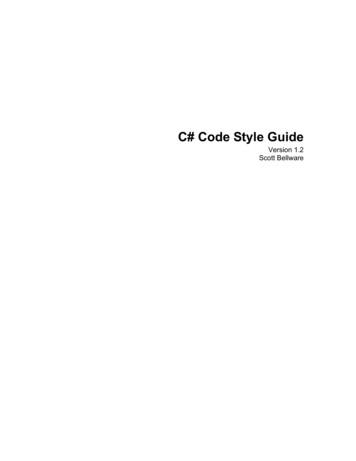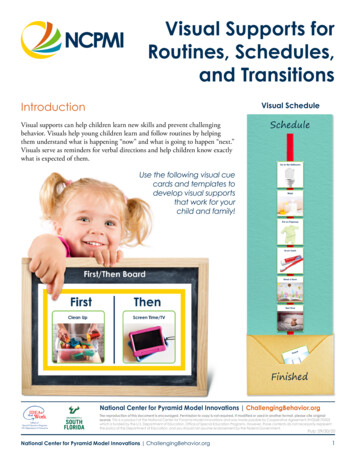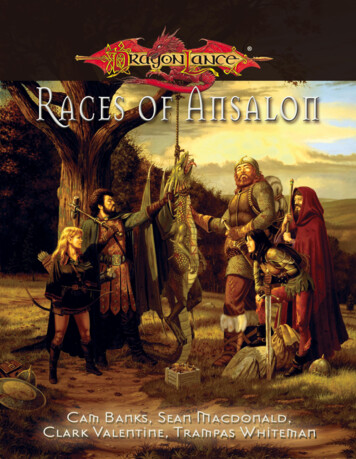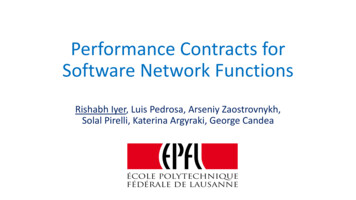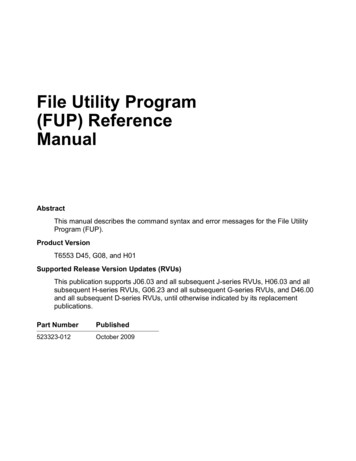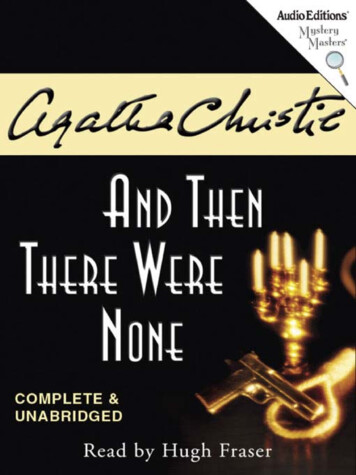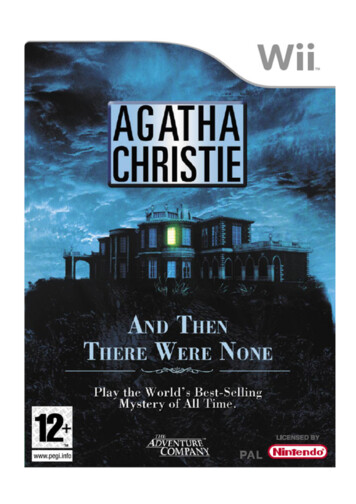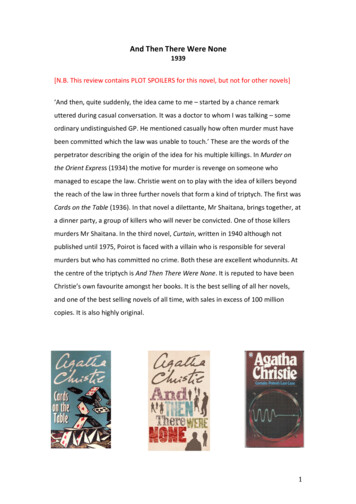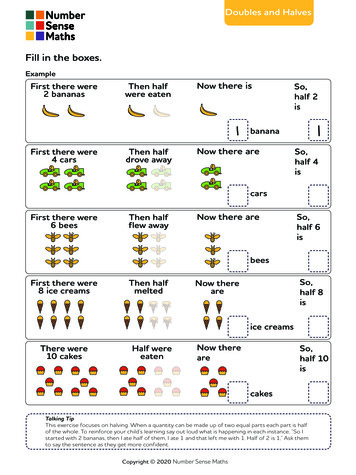
Transcription
Doubles and HalvesFill in the boxes.ExampleFirst there were2 bananasThen halfwere eatenNow there isSo,half 2isbananaFirst there were4 carsThen halfdrove awayNow there areSo,half 4iscarsFirst there were6 beesThen halfflew awayNow there areSo,half 6isbeesFirst there were8 ice creamsThen halfmeltedSo,half 8isNow thereareice creamsThere were10 cakesHalf wereeatenNow thereareSo,half 10iscakesTalking TipThis exercise focuses on halving. When a quantity can be made up of two equal parts each part is halfof the whole. To reinforce your child’s learning say out loud what is happening in each instance, “So Istarted with 2 bananas, then I ate half of them, I ate 1 and that left me with 1. Half of 2 is 1,” Ask themto say the sentence as they get more confident.Copyright 2020 Number Sense Maths
Doubles and HalvesComplete the equations.ExampleDouble 11 1 2Double 22 2 Double 33 3 Double 4 Double 5 Half of 22-1 Half of 44-2 Half of 66-3 Half of 88-4 Half of 1010 - 5 Talking TipAsk your child to complete the equations on the right.Encourage them not to count the dots in the tens frame, but rather to “just see” the quantity ondisplay. Reinforce the learning by summarising the first few after they have completed the equation,“That’s right, double 1 is 2.” Then ask them to tell you the summary sentence themselves.Copyright 2020 Number Sense Maths
Doubles and HalvesFill in the missing numbers.Example6333 3 6444 4 2101 1 2425 10610 - 5 2 2 51052236-3 2 4848-4 Talking TipThe focus here is applying the double or half to complete the part part whole, and then using the partpart whole to solve the equation below it. Ask your child first to complete the part part whole pictureand then to complete the equation.Reinforce your child’s learning with language such as “Because the parts are the same, when we addthem it is the same as doubling. Double 3 is 6 so 3 3 6.” “Here one of the parts is half the whole, sothe other part must be the same as the part we have. Half 10 is 5, so 10 - 5 5.”Copyright 2020 Number Sense Maths
Doubles and HalvesAnswer the question in the story.1. There are 2 cars parked in a street. 2 more arrive.How many are there now?2. James will eat 3 sausages. will eat 3 sausages. Howmany should we cook?3.make 8 paper butterflies. give half away. How manydo have left?4. There are 5 apples and 5 oranges in the fruit bowl.How many pieces of fruit is this altogether?5.am making 4 cups of tea. only have 2 teabags. Howmany more do need?6. There are 10 windows in our classroom. Half are open.How many are closed?7. There are 4 dogs in the park. 2 are on their leads.How many are not on leads?8.make 6 snowballs. throw 3 of them at my friend.How many are left?Talking TipThis exercise focuses on linking double and half calculations to everyday situations. Read each story toyour child and encourage them to visualise each situation.Your child may be able to tell you the total straight away. If they can, emphasise the link between thestory and a calculation by responding with “That’s right, it’s 7 because 3 and 4 make 7 (double 3 plus 1).So there are 7 cars parked in the street altogether.”If your child needs help to understand the story, you can draw simple pictures to support them, or usethe counters and the tens frame to act it out.Copyright 2020 Number Sense Maths
Near DoublesFill in the missing numbers.Example3 3 561 more 5 101 less1 more3 4 75 4 4 4 83 3 1 more4 5 2 2 1 more41 more2 3 1 1 1 more1 2 61 less3 2 4 4 1 more21 less1 less81 less4 3 2 2 1 more1 less2 11 less41 less Talking TipUsing what you know to work out what you don’t know is an important mathematical skill. Now yourchild knows their double facts they can use them to solve facts that they may not yet know - neardoubles.In this exercise your child is learning to adjust the double fact by 1 more or 1 less to solve the neardouble equation below it. Reinforce their learning with language such as, “That’s right, if we know thatdouble 3 is 6, then 3 4 must be one more than double 6. It’s 7”.Copyright 2020 Number Sense Maths
Near DoublesFill in the missing numbers. Use thedoubles fact in the middle to solve thenear doubles either side.1 2 2 3 4 3 2 2 43 3 64 4 83 2 4 3 4 5 4 5 2 1 3 2 5 5 102 2 43 3 66 5 2 3 3 4 4 3 4 5 3 4 4 4 85 5 104 4 84 5 6 5 5 4 Talking TipUsing what you know to work out what you don’t know is an important mathematical skill. Encourageyour child to solve these sets of equations using the middle equation that is completed for them.Reinforce learning using language such as “So, we know double 2 is 4, and we know 2 1 is one lessthan double 2, the answer must be 3. ” Or, “So, we know 3 2 is one more than double 2, and weknow double 2 is 4, so the answer must be 5.”Although adding 1 and 2 might be simpler to do using other strategies, learning this approach withsimple numbers will enable your child to tackle questions such as 49 49 (as 2 less than double 50)when they move to bigger numbers.Copyright 2020 Number Sense Maths
Near DoublesAnswer the question in the story.1. There are 3 cars parked in a street. 4 more arrive.How many are there now?2. James will eat 3 sausages. will eat 2 sausages. Howmany should we cook?3. There are 5 apples and 4 oranges in the fruit bowl.How many pieces of fruit is this altogether?4. Tess is making 5 cups of tea and 4 cups of coffee. Howmany drinks is she making?5. In our classroom, 4 of the windows are open and 3 areclosed. How many windows are there altogether?6. There are 2 dogs and 3 cats in the park. How many petsin the park altogether?7.make 3 cakes and 4 biscuits. How many things havemade?Talking TipThis exercise focuses on linking near double calculations to everyday situations. Read each story toyour child and encourage them to visualise each situation.Your child may be able to tell you the total straight away. If they can, emphasise the link between thestory and a calculation by responding with “That’s right, it’s 7 because 3 and 4 make 7 (double 3 plus 1).So there are 7 cars parked in the street altogether.”If your child needs help to understand the story, you can draw simple pictures to support them, or usethe counters and the tens frame to act it out.Copyright 2020 Number Sense Maths
Copyrigh 02 Number Sense aths Talking Tip This exercise focuses on halving. When a quantity can be made up of two equal parts each part is half of the whole. To reinforce your child's learning say out loud what is happening in each instance, "So I started with 2 bananas, then I ate half of them, I ate 1 and that left me with 1.
